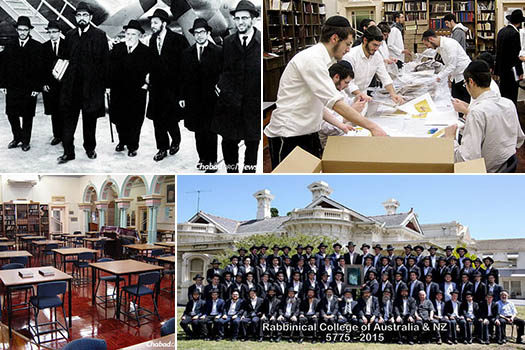
Yeshivah Gedolah: A 50-Year Educational Powerhouse in Australia
by Menachem Posner – Chabad.org
Rabbi Mattis Kantor remembers when he left Australia in 1959 at the age of 15 to learn abroad.
“There was no yeshivah in Australia, so I went to public school and learnedTalmud in the afternoons, but that wasn’t enough,” says the rabbi and author, who has served congregations in Australia and New York. “I enrolled in the Telshe Yeshivah in Cleveland since they had a dormitory that could accommodate out-of-towners.
Others went to New York to learn at the Central Lubavitz Yeshiva in Brooklyn and other yeshivahs. It was a far trip. A letter home took two weeks to arrive and another two weeks for the reply to come; no one even dreamed of making phone calls, which needed to be booked weeks in advance and cost a fortune.”
By 1970, when he returned with his wife to lead the fledgling Hillel House in Sydney, “an entire Jewish atmosphere had grown in [his] absence.” He says the change was largely due to the presence of the Rabbinical College of Australia and New Zealand.
The college, more commonly known as Yeshivah Gedolah (the “Great Yeshivah”), was established on Feb. 1, 1966 (11 Shevat5726). It has been a teaching powerhouse for 50 years, educating post-high-school rabbinical students, between 17 and 20 years of age.
It was founded under the direction of Rabbi Zalman Serebryanski, one of the Russian-born Chassidim who formed the basis of the Chabad community in Australia. Known to all as “Reb Zalman,” his character was forged in the Chabad underground network in the U.S.S.R and the Red Army, where he managed to survive, all the while maintaining fealty to Judaism.
After slipping through the Iron Curtain to war-ravaged France, he was among a group of Chassidim dispatched by the previous Lubavitcher Rebbe—Rabbi Yosef Yitzchak Schneersohn, of righteous memory—in 1949 to bolster Judaism in Australia. The group of salted Chassidim and their families came at the behest of Kantor’s maternal grandfather, Rabbi Moshe Zalman Feiglin, whose trailblazing efforts for Judaism in his small farming colony near Shepparton—about 180 kilometers northeast of Melbourne—earned him the moniker, “Abraham of Australia.”
The efforts of Feiglin, Serebryanski and their cohorts bore fruit when the Yeshivah College, which they had founded and was led by American-born Rabbi I.D. Groner, had a graduating class of six young men who were ready to pursue advanced, post-high school Judaic studies—and do so locally.
Sole Purpose to Study Torah
“Reb Zalman found a house that was waiting to be demolished, and we were set to begin learning there after our January summer holidays,” recalls Rabbi Mottel Gutnick, whose father, Rabbi Chaim Gutnick, was a leading Australian rabbi and among the founders of the Rabbinical College. “We were a small group, and we felt somewhat alone, knowing that we were far from the great overseas yeshivahs we’d heard about.”
The founding rosh yeshivah (lecturer) was Rabbi Lazer Herzog.
Gutnick recalls that he and his fellows were inspired by the lively correspondence they carried on with the Rebbe, Rabbi Menachem M. Schneerson, of righteous memory, who encouraged them to remain in Australia.
A year later, their ranks were bolstered when the Rebbe dispatched six senior North American rabbinical students to join them.
“We had no idea of what to expect,” says Rabbi Yosef Minkowitz, one of the six young men and today the head of school of Beth Rivkah Academy in Montreal, Canada. “For all we knew, we would be dodging kangaroos hopping along unpaved streets.”
The Rebbe’s instruction—conveyed via Rabbi Chaim Mordechai Aizik Hodakov—was that the group should travel as soon as possible, provided that they would be going on their own volition, had permission from a doctor and their parents, and had the necessary legal documents to do so.
In addition to Minkwitz, the group was made up of Avrohom Altein, Leibel Kaplan, Shloma Majeski, Hirshel Morozov and Hirshel Lipskier.
Before they departed, the Rebbe invited them twice to his office to receive his advice and blessing, and there gave them each Chassidic treatises and a symbolic bottle of vodka—marks of his appreciation.
In his talk to them, the Rebbe stressed to the young men that their sole purpose was to study Torah, both Talmud and Chassidic teachings, and that they would thus “conquer Australia.”
They boarded the plane together with Rabbi Eliyahu (Yaichel) Simpson, an elder Chassid who was going Australia to attend the wedding of his grandson, Rabbi Pinchus Feldman, today the chief Chabad-Lubavitch representative to Sydney.
“It was unprecedented,” recalls Gutnick, now rabbi at Ellwood Shul (his late father’s congregation), senior dayan of the Melbourne Beth Din, rabbinic administrator of Kosher Australia and president of the Rabbinical Council of Victoria. “When these six young men walked down the streets in their dark suits and hats, they turned heads. People would ask: “Is this an undertaker’s convention?’”
Friendships, Learning, Personal Growth
The yeshivah found warm support from the Melbourne Jewish community, which had a significant contingent of Polish Holocaust survivors. Even as many of them had distanced themselves somewhat from Jewish observance, they remained deeply nostalgic for the rich Jewish lives they knew in Europe and were eager to help recreate it in their adopted homeland.
“Many of us were not from strictly religious homes,” says Avrohom Procel, executive director of the Yeshivah Gedolah, “but were inspired by the example of the American students, who were so normal and approachable, yet who clearly inhabited a higher, more spiritual world.”
While the notion of deferring college in order to study Torah was already accepted in the American observant community, it was still a novelty in Australia. Many a parent had their worries assuaged by Serybranski, who was said to have a close rapport with people across the spectrum of Jewish culture and observance.
In fact, it wasSerybranski himself who attracted many students, includingShimon Allan, who hailed from New Zealand.
“I came to Melbourne in ’68 to study at a Jewish high school,” says Allan, who now lives in Melbourne with his family. “In those days, the observant community was still quite small and very heimish. It was Simchas Torah, and I went with a friend to a celebration in the home of the late Nathan Werdyger, who was actually Reb Zalman’s son-in-law. I walked in and people were sitting around the table, listening attentively as Reb Zalman spoke. I had no idea who he was, but I was drawn to him. I made inquiries and transferred to the Yeshivah Gedolah after I graduated.”
Allan recalls that the institution was a center of learning for many: During the holidays, overseas students visiting home would come by to study during the day, and university students would arrive in the evenings.
He says the atmosphere was in large part set by the shluchim and Reb Zalman—“a very warm and encompassing individual, who made everyone feel wanted and important.
“In a snapshot, I have to say that that was a most wonderful time in my life,” he recalls. “It was a time of great friendships being developed, great learning and great personal growth.”
Seeds for the Future
While the Chabad emissaries spent the lion’s share of their two years on the continent studying, they spent their holiday vacation time traveling the country, spreading Jewish awareness and inspiration.
“I remember when I first saw my first yeshivah student, Rabbi Avrohom Altein who came to spend Shavuot in Sydney,” says Rabbi Aryeh Solomon, today campus rabbi at Moriah College in Sydney. “He was totally unaware of the tremendous impact he had on me and my fellows. It was a spiritual bomb that the Rebbe had dropped on Australia. Until then, our Judaic teachers were European men, mostly Holocaust survivors. They were very devoted, but we couldn’t relate to them. They were broken men with broken accents. Then we met 21-year-olds who spoke English but didn’t compromise on their Judaism even one iota.”
During that visit, Altein spoke to Solomon’s parents about sending their son to Melbourne, but they preferred to wait until he finished high school.
His second encounter was when two young men, Minkowitz and Morozov, came to Sydney for Sukkot. Working together with Feldman, who had recently established Chabad in Sydney, they visited heavily Jewish public schools, where they spoke to the students and gave them the opportunity to observe the holiday.
Years later, Solomon met Minkowitz and told him: “Do you even realize the tremendous impact you had? Of the young people in my class, three of us are Chassidim with large Chassidic families. You planted the seeds!”
Like Procel, Solomon credits Reb Zalman with influencing his parents to send him to Yeshivah Gedolah. “My parents were very impressed by him,” he remembers. “Even though he was an elderly man from a different culture—an authentic, old-world Chassid who davened for hours—he had a unique ability to relate to them in a very personable way, and they were very taken by him.”
In time, the institution grew. When the first cohort of shluchim completed their two-year term in Australia, they were replaced by others, selected from the Chabad yeshivahs in Montreal, Canada; Morristown, N.J.; and Brooklyn, N.Y. In addition to native Melburnians, a steady stream began to come from Sydney.
The Rabbinical College was originally located on Goathlands Street in East St Kilda, and then moved to Kalymna Grove. In 1969, Rabbi Chaim Gutnick—together with his brother Rabbi Schulim Gutnick and Reb Chaim Serebryanski—purchased the house at 11 Meadow St., East St Kilda, in an attempt to settle the college. Yet because of Council objections, Yeshivah Gedolah was not to stay there for long, and a new location had to be sought.
On Yud Tes Kislev 5731 (December 1970), after Rabbi Chaim Gutnick contacted and received the Rebbe’s encouragement and blessing to go ahead with it, a large and luxurious property on Alexandra Street was purchased for the yeshivah. A rambling mansion built in the 1880s, it had once been the home of royalty and had a large hall that was perfectly suited to become a study hall. It also had ample residential accommodation for students.
Added Staff Over the Years
Due to an increase in numbers at the college, the need arose for more staff. In 1971, Rabbi Avrohom Blesofsky was appointed to strengthen the learning program in Chabad Chassidus and provide daily guidance for the students.
In 1974, the yeshivah welcomed Rabbi Binyomin Cohen to take the place asrosh yeshivah.
Reb Zalman retired from active work at the Yeshivah Gedolah in 1977, after 25 years of community service in Australia. A Silver Jubilee Dinner lauding his accomplishments over the years was held at the Southern Cross Hotel, with the 39thpremier of Victoria—the Hon. R.J. Hamer—as guest of honor.
At that same time, Procel was appointed to take his place.
In 1989, Rabbi Yaakov Winner arrived with his family from New York to assume the position ofmashpia (spiritual mentor) and lecturer in Chassidic studies. It was at this time that many overseas students were attracted to study in Melbourne.
“Rabbi Winner brought something fresh and exciting to the place,” says RabbiElisha Greenbaum, today the spiritual leader of Moorabbin Hebrew Congregation and co-director of L’Chaim Chabad in Moorabbin, Victoria. “He was young and dynamic. He could explain a deep Torah concept using an analogy from sport, something we were attracted to.”
In 1993, the Rabbinical College became Victoria’s first tertiary Jewish college to be formally approved by the State Training Board of Victoria as a registered private provider of vocational education and training. It has seen steady enrollment ever since.
Even today, with air travel cheaper and easier than ever before, many Melbournian students choose to remain in Y.G., as it is affectionately known, for a year or two before continuing their studies overseas. Among the student body of 70, there is a significant minority of students from the U.S., Canada, United Kingdom, and South Africa, attracted by the school’s reputation as a yeshivah where students can grow as scholars, chassidim, and individuals in an environment of Torah, respect, and positivity.
Fifty years since its founding, the fruits of Yeshivah Gedolah can be readily seen across the Australian content, where the majority of the country’s rabbis are alumni, and six young men in beards and black hats would hardly raise eyebrows in Melbourne or Sydney—or even in the country’s capital of Canberra.

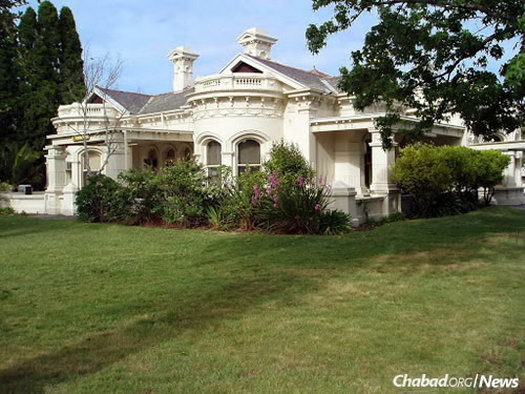
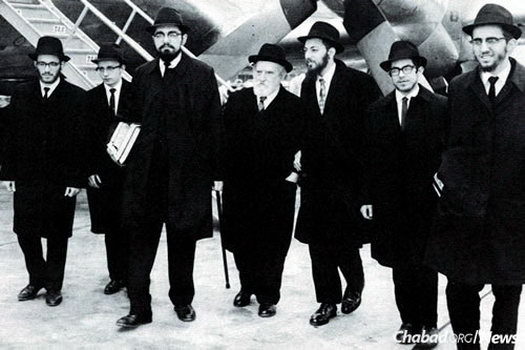

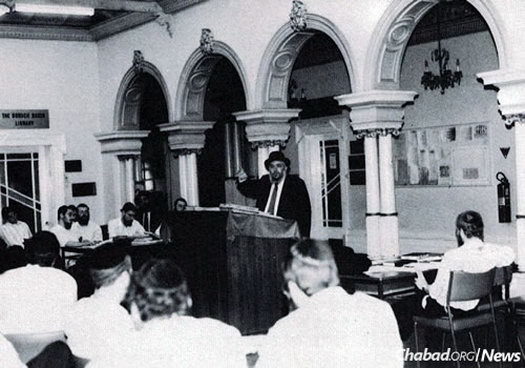
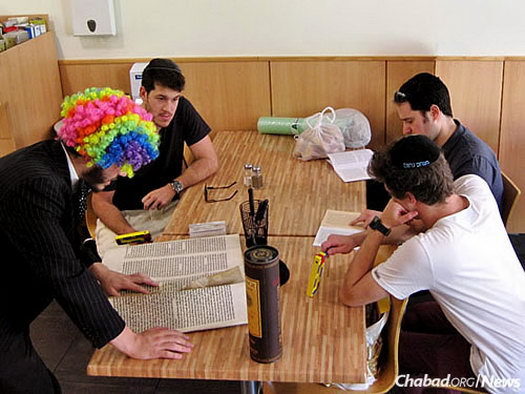
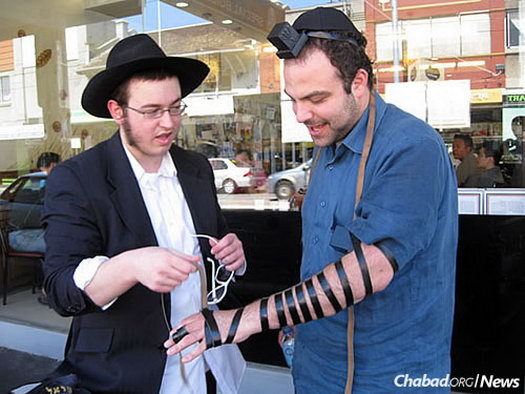
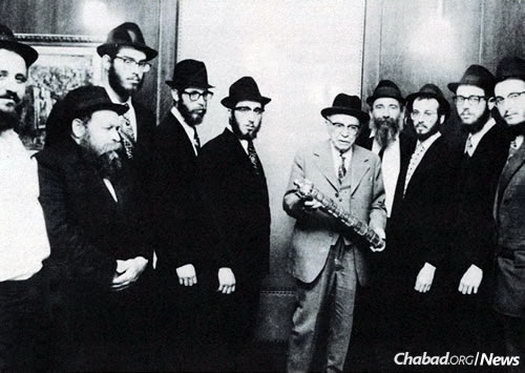
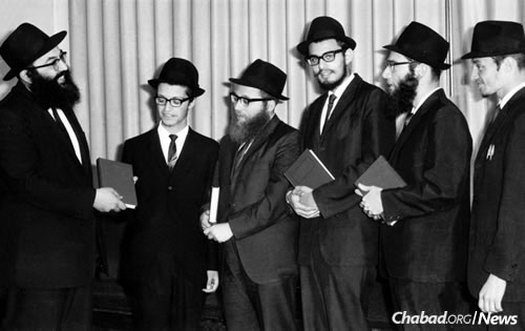
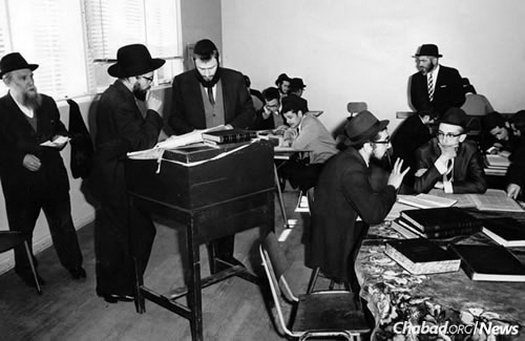
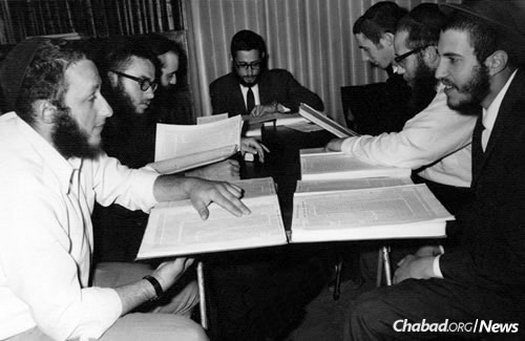
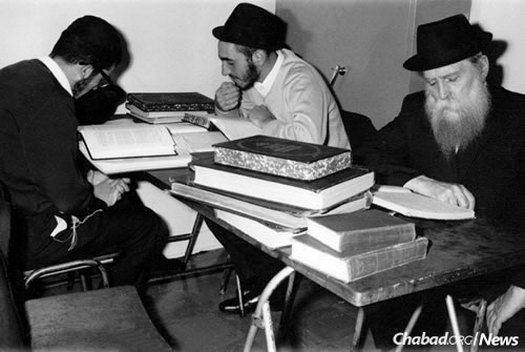
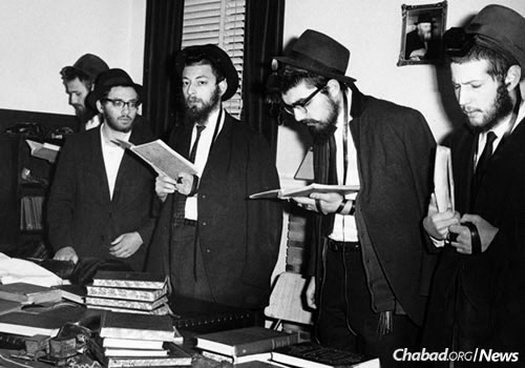
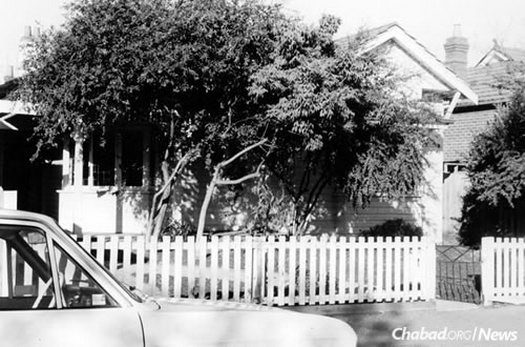

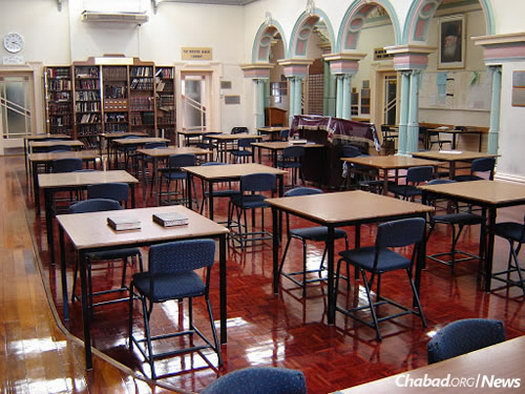
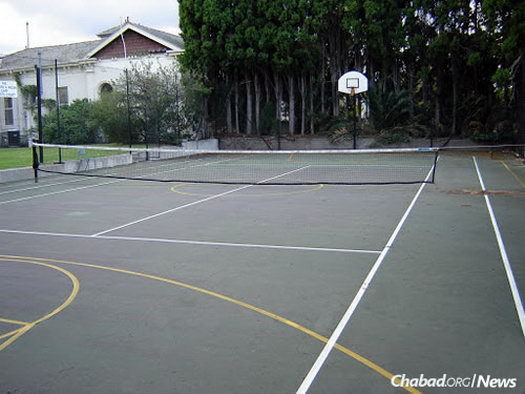
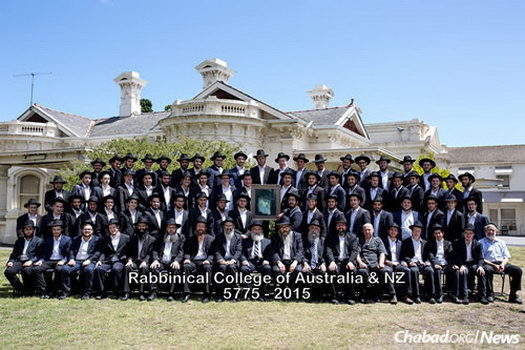















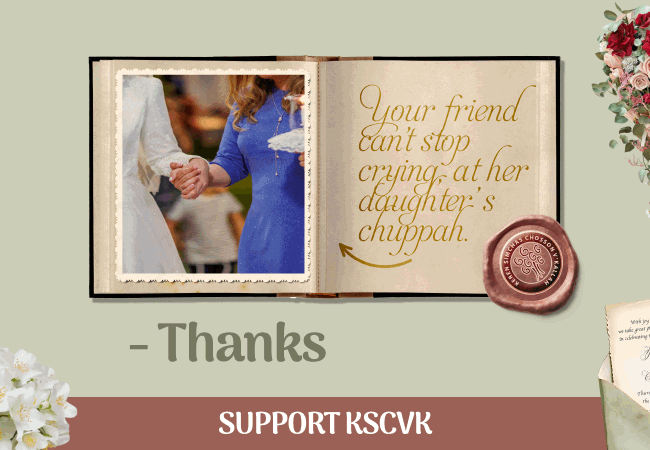
Aussie
Chabad in Australia is thanks to Rabbi Groner
He was the glue that united all the communities from Adass to Mizrachi and beyond. Everyone, regardless of affiliation loved and respected Rabbi Groner in a way that can not be replicated by another.
He not only changed the face of Jewish life in Australia, but he touched and inspired countless individuals who came in contact with him, even for a short period of time. Whether it was a student in the Yeshivah, the Smicha program, the girl’s seminary, the Kollel or just a visitor to the community, he impacted them all.
And nothing can compare to the treasures he shared from his time as a bochur by the Rebbe.
He is so sorely missed.
May we be reunited with the coming of Moshiach immediately.
Hashem please send us our Rebbe in a guf
Ashreinu ma tov chelkeinu
MOSHIACH NOW!